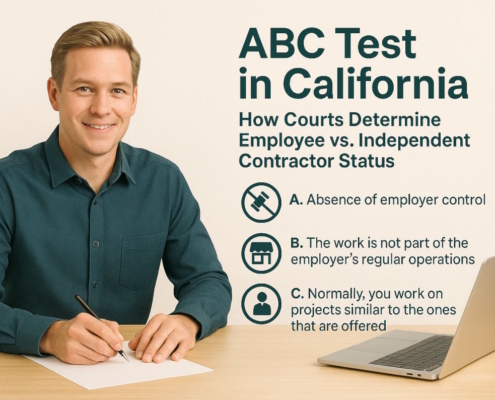When it comes to using PTO, employees can generally use it whenever they want. That said, they must receive the approval of their supervisor first. At some companies, there are “blackout” periods, when no one at the company may take a vacation. These are most common in retail, when work is very busy at certain times of the year, such as Thanksgiving and Christmas. Employees in retail may not be able to use PTO during these periods. If one works in a small company, he or she may not be able to take vacation at the same time as another coworker. This is because both employees being gone would leave the employer short-staffed.
- Example: Ophelia works at Target and is involved in restocking shelves. During the holiday season, the store is extremely busy. Ophelia has saved up PTO so that she can spend Christmas with her family in Michigan. She is upset to learn that Target has a holiday blackout period during which employees cannot take time off. Unfortunately for Ophelia, there is nothing she can do. Enforcing blackout dates is legal.
- Example: Thor works at a small company consisting of only five employees. For some time, he has been planning a vacation to Maui to go surfing. He would like to go in November when the waves are big, but he learns that his boss has already approved vacation for his coworker Jana at the same time. His boss asks if he can take his vacation at another time, because otherwise she will be short-staffed. Under the law, his employer is allowed to deny his request.
While this sounds harsh, it is legal. In certain industries, employees cannot take vacation at certain times, even if they would like to. While they might have PTO, their employer does not have to approve requests to use it.
Just as there is no law requiring employers to provide PTO, there is no law stopping employers from denying already-approved PTO. However, it is unlikely that an employer would do this because it would be in bad faith. The company’s reputation would be damaged, and they would not attract employees.
- Example: A month ago, Casey requested to take vacation time. Her boss approved her request, and she booked an expensive trip to Mykonos with her husband and kids. Three days before her departure, her boss changed his mind and ordered Casey to cancel her vacation plans and stay at work. Apparently, he will be short-staffed. While Casey’s employer can technically do this, it reflects extremely poorly on him and his business. Casey responds by quitting on the spot and calling out her boss on Glassdoor. She then goes to Mykonos with her family and lounges on the beach eating olives and feta cheese.
While an employee may feel anxious or guilty about taking earned PTO, they are absolutely entitled to take it. Vacation and time off are good for mental and physical health. A happy and healthy employee is good for business.
But let’s say an employee really doesn’t want to use their PTO. Some employers might allow vacation days to roll over into the next year. They will often apply a cap on days accrued, meaning that at some point vacation must be taken in order for more to be earned.
Occasionally, an employer might pay out an employee, handing them a check worth the value of those vacation days. But in some states, there is a use-it-or-lose-it policy, which means that if an employee does not use their PTO by a certain date, it disappears.
Anything that is not protected by the Equal Employment Opportunity Commission (race, gender, age, disability, etc.) may be a cause for termination. However, if an employee follows the company PTO policy to a letter, there should be no legitimate reason for firing.






















